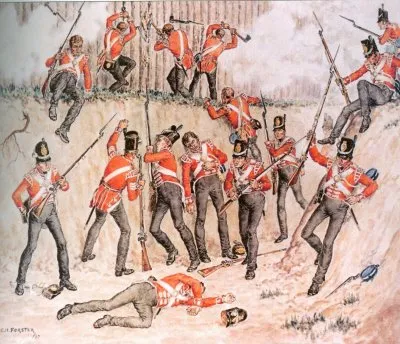Showing posts with label Books. Show all posts
Showing posts with label Books. Show all posts
Tuesday, August 1, 2017
Eutaw Springs: The Final Battle of the American Revolution's Southern Campaign
Eutaw Springs: The Final Battle of the American Revolution's Southern Campaign
by Robert M. Dunkerly
This hard fought battle has been over shadowed by the victory at Yorktown. When written about it had usually been dismissed as a near victory by Nathaniel Greene who lost only when his troops dissolved into a mob after looting the British camp. The battlefield itself has long thought to be submerged under flooded lake Marion. But no more. Robert Dunkerly in this new book has rescued the Battle from obscurity and given us a excellent account of one of the hardest fought actions of the war.
Fought between American General Nathaniel Greene's Southern Army of Continental and local militia and State forces and British General Alexander Stewart's mix regular and loyalist force on 8 September 1781 outside Charleston South Carolina. The Americans had an slight advantage in numbers (about 2,000 to 1300) and especially cavalry ((200 to 60). The battle started with the Americans capturing a unarmed foraging party of about three hundred men. Greene used his militia and State regiments to engage the British line first, and then his continental went in and broke the British. As the British fell back, the New York Volunteers created a Chew house type defense in a barricaded building, while the flank companies under Major Marjabanks held the flank giving the British a chance to rally. Greene's exhausted veterans fell back and the Battle was over. Stewart later said if he had had more cavalry he could have routed the Americans.
Controversy plagued its history and myth making distorted the fighting. Friends and enemies attacked and defended Henry "Light Horse" Lee's actions that day. Did Greene's army dissolve into a mob while over running the British camp? Or was that an excuse? And what of the battlefield ? Was it really submerged under lake Marion?
The author has researched the battle and located numerous primary accounts. He reconstructed the Battle based on topography, first person accounts and archeological finds. There are very good maps and excellent order of battles. In short a great find for miniature gamers wanting to re fight this battle. I enjoyed this book very much and highly recommend it.
Friday, November 25, 2016
A Narrative of a Light Company Soldier's Service in the Forty-First Regiment of Foot (1807-1814)
Shadrack Byfield (sometimes Shadrach) was a British soldierwho served in the Light Infantry company of the 41st Regiment during the War of 1812. He the author of a memoir of his wartime experiences, A Narrative of a Light Company Soldier's Service, published in 1840. This work is notable as one of the only accounts of the war written by a common British soldier.
Born in Bradford on Avon to a family of weavers in 1789, Byfield enlisted in the Wiltshire Militia in 1807, aged eighteen. Two years later, he volunteered into the 41st Regiment and was sent to join the regiment in North America, serving in Lower Canada and at Fort George in modern-day Niagara-on-the-Lake prior to the outbreak of war.
He saw much service during the War of 1812; the Siege of Detroit, the Battle of Frenchtown (where he was wounded in the shoulder), the Siege of Fort Meggs, and the Battle of Fort Stephenson. Byfield narrowly escaped capture after the British defeat at the Battle of the Thames and later rejoining elements of his regiment in the Niagara area. He participated in the Capture of Fort Niagara and was at the Battle of Lundy's Lane. At the Battle of Conjocta Creek, an unsuccessful British raid on 3 August 1814 his left arm was shattered by musket ball. Byfield's forearm was subsequently amputated and he was invalided back to England, where he was awarded a pension from the Royal Hospital Chelsea in 1815.
Byfield returned to Bradford on Avon and married but was prevented from working at his trade as a weaver because he required use of both hands to operate a loom. However, according to his memoirs, a design for an 'instrument' came to him one night in a dream; this contraption enabled him to work at a loom with just one arm, allowing him to provide for his family.
Byfield published a memoir of his wartime experiences in 1840. Although some sources speculate that he died in 1850 more recent research suggests that Byfield actually died on 17 January 1874 in Bradford, aged 84.
Shadrack Byfield's Narrative provides a common soldier's perspective of the War of 1812. Because of this his humble account has been republished numerous times in many editions. Byfield has often been portrayed as the archetypical 1812-era British soldier by modern historians. John Gellner, who edited Byfield's memoirs in 1963, asserted that his story "could have been told by any one of those humble, patient, iron-hard British regulars who more than made up in discipline, training and bravery for their lack of numbers." Byfield is also the protagonist in a 1985 children's novel, Redcoat, by Canadian author Gregory Sass, which presents a heavily fictionalized account of his military experiences.
An online edition of his narrative is available here:
http://www.archive.org/stream/lightcompanysoldi00byfirich#page/345/mode/1up
Subscribe to:
Posts (Atom)



